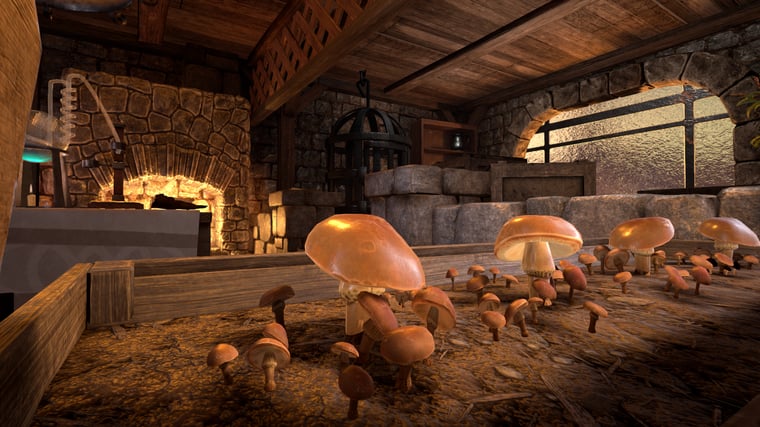7 steps for starting an escape room business
Posted on: 2021-02-24
So, you're interested in starting an escape room business. You love the experiences you've had playing others' rooms and want to offer the same.
This list is designed for entrepreneurs to get the information they need quickly to determine if an escape room is right for them.
Step 1 - Learn about the escape room market
First, it’s important for you to play a lot of escape rooms. This helps you determine the experience you want to provide to your future clients. Learn about your competitors and get out and talk to existing owners. Get a feel for these businesses and try to understand what it is you want to offer.
- What does the lobby look like?
- What do the rooms look like?
- How do the staff treat you?
- What level of overall quality do you see?
- What seems to be working really well for your future competitors — and where is there friction?
Michelle Rouland, owner of Escape60 - Peoria location, says, “Planning with the numbers in mind that make sense is #1. Limit your risk to yourself as much as possible.”
So before you go on, calculate your break-even point. This is a simple calculation that will help you set goals for success. Based on what you’ve learned about the industry, the local market, and what you want to create, take your known expenses such as rent, utilities, staff, plus the cost of building a room averaged per month based on how long you expect it to operate.
Then calculate how much a session will be per person and how many in a group.
Total expenses divided by the group = Your monthly income requirement.
Step 2 - Determine if your desired location can support the escape room
With the escape room market maturing, it's important to look at how many competitors are in the area and what the population per location is. You don’t want to enter a super crowded space, but the good thing about escape rooms is that enthusiasts who have visited your competitors will be happy to see that there are new experiences available.
But the downside is of course, the same goes for you. Escape rooms can only be done one time, so you need to ensure you have the amount of square footage to support more than one room. If your customers had a great time, you definitely want the option of being able to get them back in for a repeat visit.
Step 3 - Plan your rooms in advance
The more you have a plan for the room setup before opening, the more time you can spend being open than building out the room.
This includes the puzzles and flow of the rooms. This is where checking out plenty of existing rooms will pay off. Design them on paper, then create prototype versions and see how friends and family react to them. Get their feedback and adjust your approach before you commit to the costly full build.

If you’re looking for something simpler, there are also resources online that allow escape room owners to obtain ready-made room designs and props.
And either way, keep in mind reset logistics. Every minute spent resetting the room takes away from the total amount of bookings you will be able to do and every mechanism adds a point of possible failure, so make it as simple as possible while still keeping it interesting.
Step 4 - Puzzle selection
The information you gain from going and experiencing other escape rooms should help you determine the puzzles you like to solve, what you think your customers will enjoy, and the ones that are not as fun.
Having a range of puzzles is important to offer fresh escapes. If you repeat the same puzzle for each room, the customers happy enough to have come back after their first room won’t be leaving happy again. They might try to warn others with reviews.
Presenting a variety of puzzles is also a good move to keep all customers in a group engaged. Have something that requires you explore the room and gather information, something that requires you put the clues together and figure out a solution from all that investigation. Everyone is different so some puzzles may challenge some and others not.
Think about a challenge that might be more physical skill-based, like a rolling ball puzzle. Try something visual that uses light and shadow. The more you have, the higher the chances that everyone will get a turn to shine.
Step 5 - Organize and implement business needs

Now that you have some information about the viability and the direction of your business you can start to implement these important logistical and administrative steps.
- Create a business plan.
- Create the legal name of your business.
- Open a business account.
- Obtain local permits and licensing.
The details of these will be different depending on where you are, but make sure you’ve taken every legal step you need to operate your business. Obtain legal advice specific to your area about any accommodations you may need to make, and learn about any particular regulations you may need to follow.
Step 6 - Open and market your new escape room
As Michelle Rouland says, “Put on your blinders and go for it”.
With escape room market is maturing, most people know what an escape room is. You don't have to spend as much time and money educating the customer on that end anymore.
However, this does mean competition is tough and you may be looking at a high cost-per-click for your digital marketing. You will need a robust website and a booking system for certain.
You’ll also want to think about what other promotional steps you can take. Especially if you’re in an area with high foot traffic, you’ll need the outside of your business to look incredible.
Step 7 - Make your escape room business stand out!
With everything else in place, consider this: what's really going to make you stand out? What's going to turn that decent enough experience into the unforgettable adventure that gets people talking about it to all their friends?
There are various approaches you can take here. High quality, movie set grade rooms would set you apart from other rooms that lack that level of polish. Realistic props and furniture will help sell that immersion. Using technological elements, like large moving mechanisms, fog effects, or interactive screens can also help.
You could also hire live actors to play a part in your rooms. An energetic, believable introduction to your rooms and interactions throughout will stick in your customers minds, and are a lot more fun than someone processing a transaction, running through some rote rules, and closing a door.

Another option to really make you stand out (while also bringing in a host of other benefits) is adding VR escape rooms. Customers can enjoy the same collaborative puzzle-solving experience — without the constraints of a physical build.
As mentioned in a previous blog on adding virtual reality escape rooms to your entertainment business, you want to reduce risk as much as possible when running an entertainment business. And by implementing an existing VR solution alongside your physical rooms, you can streamline all of those earlier steps for one of your spaces and bring customers the diversity of five escape rooms in the same square footage.
The majority of customers actually enjoy VR escape rooms as much as, or more than, physical rooms. Altogether, this means that in most cases, you’re at least doubling the attractions you have available to your repeat customers without sacrificing quality.
Our rooms have been professionally designed with our partners' customers, and your future customers, in mind. They've been tested thoroughly — and proven, being in use at more than 50 partner locations worldwide.
Ready to take the first step? Whether you run an escape room or other family entertainment business, you can contact us anytime right here. We look forward to hearing all about your location-based entertainment and learning how we can help get you set up with a VR escape room of your own!


